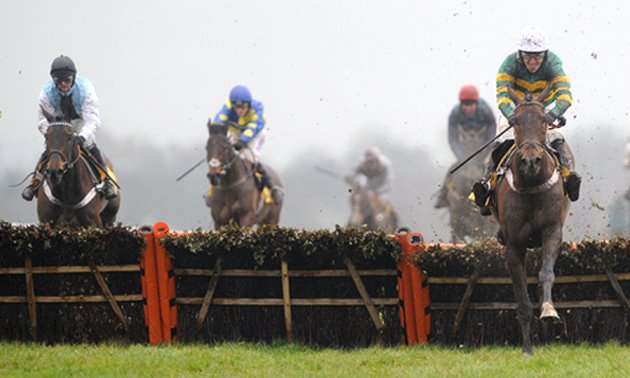Abbreviations
The following symbols are used with (or sometimes in place of) Timeform Ratings.
| p | commonly referred to as a small 'p'; the horse is likely to improve |
| P | commonly referred to as a large 'P'; the horse is capable of much better |
| + | the horse may be better than rated |
| ? | the rating is suspect or (used alone) the horse is out of form or cannot be assessed with confidence |
| § | the 'Timeform squiggle'; the horse is unreliable (for temperamental or other reasons) |
| §§ | the 'double squiggle'; the horse is so unsatisfactory as to be not worth a rating |
| x | a poor jumper |
| xx | so bad a jumper as to be not worth a rating |
You will also find the following In-Play symbols used in Race Passes.
| Start | |
| 1 | led/disputed lead |
| 2 | prominent/close up |
| 3 | mid-division |
| 4 | towards rear |
| 5 | behind |
| S | very slowly away |
| s | slowly away |
| O | badly outpaced |
| o | badly outpaced |
| Mid | |
| K | travelled notably strongly |
| k | travelled comfortably |
| L | raced very lazily |
| l | raced lazily/went in snatches |
| P | pulled very hard |
| p | pulled hard |
| J | jumped very well |
| j | jumped well |
| xx | made numerous mistakes |
| x | made mistakes |
| End | |
| F | found nothing |
| f | found less than seemed likely |
| I | idled markedly |
| i | idled |
| R | responded really well to pressure |
| r | responded to pressure |
| § | signs of temperament |
| §§ | marked reluctance |
Equipment carried abbreviations are as follows.
| b | blinkers |
| es | eyeshield |
| h | hood |
| s | (sheepskin) cheekpieces |
| t | tongue tie |
| v | visor |
In addition, the following abbreviations are used.
| 3 b.c. | means three-year-old bay colt. You may also see br (brown), ch (chestnut), gr (grey) or ro (roan), and h (horse), g (gelding), f (filly) or m (mare). |
| p8.1g | In Flat racing form figures: the surface if not turf (f - fibresand; p - polytrack; t - tapeta; a - any other artificial surface), the distance (in furlongs to the nearest tenth of a furlong), and the going (as returned by Timeform). The going abbreviations are h (hard), f (firm or fast), m (good to firm), g (good or standard), d (dead), s (soft or slow) and v (heavy) |
| c24v | In jumps racing form figures: c (steeplechase), h (hurdle) and b (bumper/National Hunt Flat race), followed by the distance rounded to the nearest furlong and the going as for Flat racing. Bumpers run on any all-weather surface are prefaced with 'a'. |
| G1 | Group/Grade 1. Similarly G2 (Group/Grade 2), G3 (Group/Grade 3), L (Listed), W (weight-for-age/conditions), M (maiden). N (novice), S (seller), C (claiming event), A (amateurs event). Where a number appears in the ratings summary, rather than a letter, this is the BHB mark off which the horse ran in a handicap. |
| TRW | Timeform Ratings of Winners. The weight-adjusted Timeform performance rating that the winner achieved in this race in each of the last five years, recorded at the end of that season. |
| TWFA | Timeform weight-for-age. Timeform race ratings are adjusted to 12-7 (jumps) or 10-0 (Flat) unless shown. So, in a Flat race, TWFA 4 9-13, 3 8-12 indicates that ratings for 3-y-os are adjusted to 8 stone 12 lb and for 4-y-os to 9 stone 13 lb. Any older horses would have their ratings adjusted to 10 stone. |
| * | in form figures indicates 'won'. Other superior figures indicate finishing position (2nd - 6th). Letters used include F (fell), pu (pulled up), ur (unseated rider), bd (brought down), r (refused), su (slipped up), ro (ran out) and co (carried out). |
Sectional timing abbreviations
Closing sectional (3f): 38.85s (99.7%)
Race Reporter sectionals showing this distance from which the sectional was taken (in this example 3f out), the time taken to complete this section of the race—rounded to the nearest 0.05s on the Flat and the nearest 0.1s over jumps—and the finishing speed (as a percentage). In past performance records individual finishing speed is sometimes abbreviated to FS%.






















.jpg)


 Url copied to clipboard.
Url copied to clipboard.

.jpg&w=300)
.jpg&w=300)
.jpg&w=300)
.jpg&w=300)
































